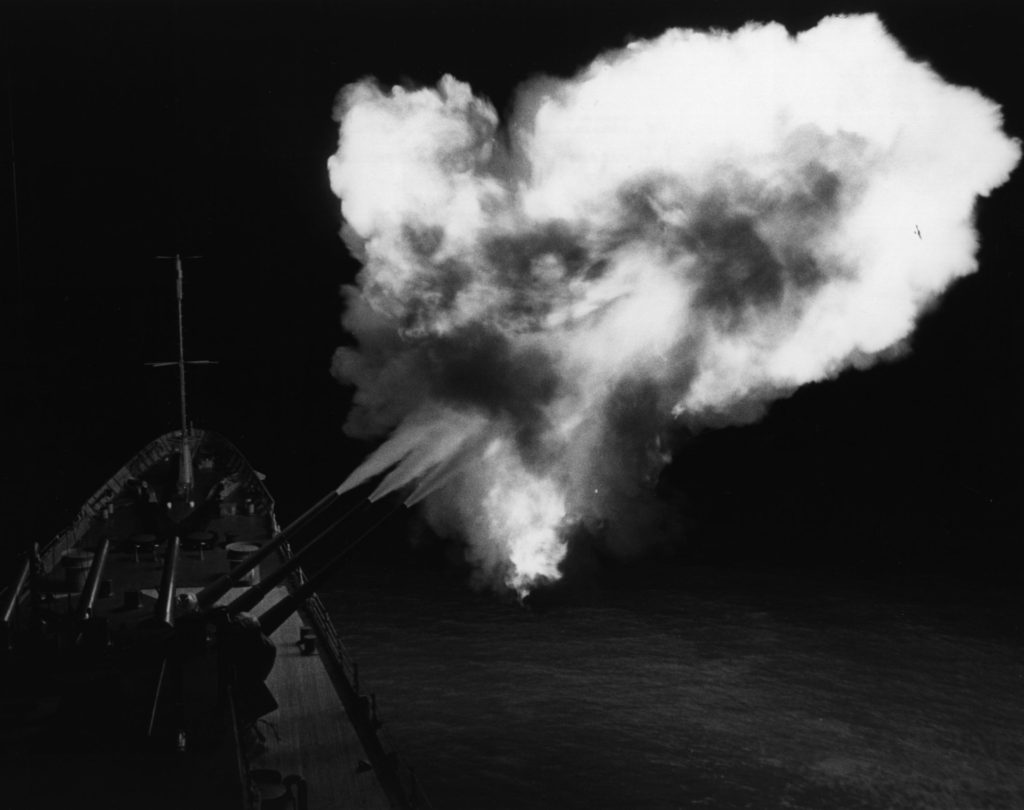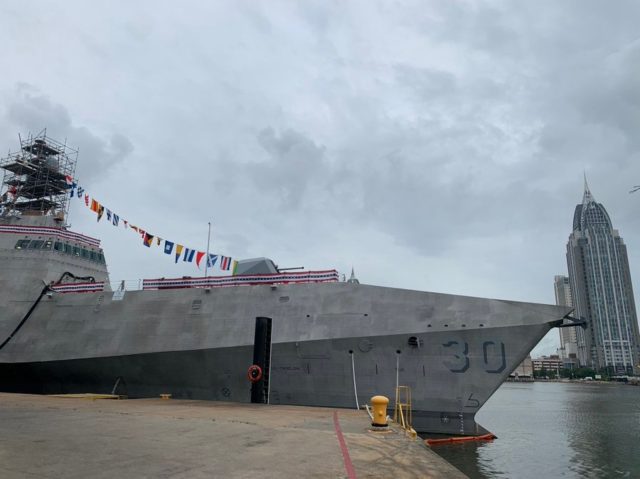The future USS Canberra (LCS 30) will join the U.S. Navy active fleet on July 22 with the service’s first international commissioning ceremony destined to be held Down Under on the waters of Sydney Harbor.
The Royal Australian Navy (RAN) Fleet Base East in Sydney, NSW, will provide the backdrop for the event.
Canberra is the first U.S. Navy warship to be commissioned in an allied country. It is the second U.S. Navy ship to bear the namesake of the Australian national capital.
“I can think of no better way to signify our enduring partnership with Australia than celebrating the newest U.S. Navy warship named for Australia’s capital city, and commissioning her in Royal Australian Navy Fleet Base East surrounded by many of the Australian ships we have worked alongside for years,” said Secretary of the Navy Carlos Del Toro, America’s Navy reported.
“I look forward to this momentous day for the ship, crew, sponsor, and all our partners in government and industry who worked tirelessly to give the future USS Canberra the celebration it deserves.”
Independence-class vessels, which include the USS Canberra, feature a trimaran hull design which is a break away from the steel/aluminum monohull of the Freedom class.
Australian Chief of Navy, Vice Adm. Mark Hammond said this historic event encapsulates seals the modern day partnership between the RAN and the U.S. Navy while saluting past ties.
“This is a unique demonstration of respect by the U.S. for the Officers and Sailors of the Royal Australian Navy,” said Hammond. “It is an opportunity to reflect on our shared history, and on a friendship forged while fighting side-by-side. On August 9, 1942 the RAN heavy cruiser HMAS Canberra was severely damaged off Guadalcanal (Solomon Islands) while protecting the U.S. Marines fighting ashore. In a surprise attack by a powerful Japanese naval force, Canberra was hit 24 times in less than two minutes and 84 of her crew were killed including Captain Frank Getting”
“I look forward to welcoming the U.S. Navy, and the crew of USS Canberra to Australia and we are honored to host the U.S. Navy’s first international commissioning. It will be a historical event to see the USS Canberra and HMAS Canberra alongside each other in Sydney. As we look to the future, the strength of our partnership remains a cornerstone of a secure, stable, free and open Indo-Pacific Region.”
The first USS Canberra was so named in honor of the HMAS Canberra, a Royal Australian Navy heavy cruiser that was sunk in the Battle of Savo Island at the start of the Guadalcanal campaign in World War II.

President Eisenhower looking out to sea from the dock of the Guided Missile cruiser ‘USS CANBERRA’, on the way to Bermuda, April 15th 1957. (Photo by Keystone/Hulton Archive/Getty Images)
The battle of Savo Island was one of the first major naval engagements in the Pacific to feature a mixed force of U.S. and Australian vessels fighting side-by-side against the Japanese.
The first USS Canberra was a Baltimore-class cruiser and later a Boston-class guided missile cruiser.
The ship entered service in 1943, and served in the Pacific theater of World War II until she was torpedoed during the Aerial Battle of Taiwan-Okinawa and forced to return to the United States for repairs.
Placed in reserve after the war, Canberra was selected for conversion into the second guided-missile carrying warship in the USN fleet.

A flash from a triple salvo lights up the night as guns on the USS Canberra fire at military targets on the North Vietnamese coast. (Photo by Hulton Archive/Getty Images)
Following the conversion, she was host to the ceremony for selecting the Unknown Soldier representing World War II in 1958, undertook an eight-month round-the-world cruise in 1960, participated in the Cuban Missile Crisis naval blockade in 1962, and was deployed to the Vietnam War on five occasions between 1965 and 1969.
Canberra was decommissioned in 1970, struck in 1978, and broken up in 1980. One of her propellers is preserved at the Los Angeles Maritime Museum, while the ship’s bell was donated to the Australian National Maritime Museum in 2001.

COMMENTS
Please let us know if you're having issues with commenting.